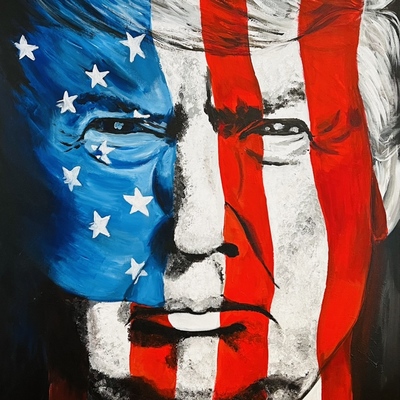Stay informed on the latest Truth Social posts from Donald Trump (@realDonaldTrump) without the doomscrolling. Consider it a public service for your mental health. (Why?)
- The United States has a significant and persistent trade deficit with Cambodia.
- Cambodia's tariffs and non-tariff policies and trade barriers are responsible for the trade deficit, making the relationship unreciprocal.
- Effective August 1, 2025, the United States will implement a 36% tariff on all Cambodian products.
- Goods transshipped to avoid the tariff will incur a higher tariff rate.
- The 36% tariff is considered less than what is necessary to eliminate the trade deficit disparity.
- Cambodian companies establishing manufacturing or building facilities within the United States will not be subject to these tariffs.
- Any increase in Cambodia's tariffs will result in an equivalent increase added to the United States' 36% tariff.
- The trade deficit with Cambodia poses a major threat to the United States' economy and national security.
The announcement of a 36% tariff on all Cambodian products, justified by economic and national security concerns, introduces supply chain uncertainty and increased costs for US companies that import from Cambodia. While Cambodia represents a smaller portion of overall US trade, the aggressive and unilateral nature of this trade policy, and its framing as a national security issue, could be interpreted as a signal of broader protectionist policies. This may elevate investor concerns about future trade relations, potentially leading to shifts in investor sentiment and impacting S&P 500 sectors exposed to global trade and supply chain disruptions.
The post outlines a unilateral tariff imposition by the United States on Cambodia, citing economic and national security threats from the trade deficit. This action signals a significant escalation in trade tensions between the two nations and could provoke retaliatory economic measures, affecting bilateral and potentially regional economic stability. However, it does not involve military threats or direct references to armed conflict, limiting the immediate risk of international conflict escalation.
- Commodities: Gold (XAU) is likely to rise as a safe-haven asset if this aggressive trade policy causes broader market uncertainty or implies a global shift towards protectionism, leading to risk-off sentiment. Oil (WTI) and industrial metals like Silver or Copper could face downward pressure due to concerns about global growth and manufacturing demand if wider trade tensions emerge. Short-Term Watchlist: XAU/USD price action, any follow-up rhetoric on trade policy towards other nations. Medium-Term Focus: Global trade policy trajectory, overall economic growth outlook.
- Currencies (Forex): The US Dollar Index (DXY) is likely to strengthen due to its safe-haven appeal amidst increased global trade uncertainty and potential capital flows into the US. Major pairs like EURUSD and USDJPY could react to the strengthening dollar. Short-Term Watchlist: DXY movements, changes in global risk sentiment. Medium-Term Focus: Future US trade policy announcements, global economic growth differentials, and central bank policy divergence.
- Global Equities: There could be a negative impact on global equities, including the S&P 500, particularly for sectors with supply chains exposed to Cambodia or generally sensitive to global trade policy. The broader market sentiment may be dampened by increased uncertainty regarding international trade relations and the potential for a wider adoption of protectionist measures. Short-Term Watchlist: Equity futures open, VIX spike/dip, performance of sectors like consumer discretionary and industrials. Medium-Term Focus: Earnings revisions for multinational corporations, macro data reflecting trade impacts, and broader geopolitical overhangs.
- Fixed Income (Bonds): US Treasury yields (10Y and 2Y) are likely to fall as investors seek safety, increasing demand for government bonds. Credit spreads in corporate bonds may widen if trade tensions are perceived to increase economic risks for businesses. Short-Term Watchlist: UST 10Y yield levels, credit ETF flows (e.g., HYG). Medium-Term Focus: Inflation expectations (tariffs can be inflationary, but growth concerns could be deflationary) and central bank policy responses to trade-induced slowdowns.
- Volatility / Derivatives: The VIX is likely to spike due to heightened market uncertainty and risk aversion stemming from the aggressive trade policy. This could lead to increased demand for downside protection in equity options. Short-Term Watchlist: VIX levels versus the VIX futures term structure. Medium-Term Focus: Potential shifts in the volatility regime if trade policy remains a consistent source of uncertainty, and systemic tail risks associated with escalating protectionism.
- Crypto / Digital Assets: Bitcoin (BTC) could initially behave as a risk-off asset, akin to gold, if the macro environment becomes unstable due to trade tensions. However, its correlation with tech stocks might also pull it down if broader equities suffer. Liquidity concerns could also weigh on the broader crypto market. Short-Term Watchlist: BTC/USD price action, correlation with major equity indices like the S&P 500. Medium-Term Focus: Regulatory news concerning digital assets in the context of international trade, and the broader macro liquidity backdrop.
- Cross-Asset Correlations and Systemic Risk: Markets should be monitored for potential breakdowns in normal asset correlations, such as equities and bonds selling off simultaneously, which could signal systemic stress. While a direct systemic shock from Cambodia-specific tariffs is unlikely, the precedent set by the policy could escalate into broader global trade conflicts. Short-Term Watchlist: MOVE index (bond market volatility), gold/USD co-movement. Medium-Term Focus: Central bank willingness to intervene if trade tensions significantly impact global growth, and signs of stress within financial market plumbing.
- Retail Sentiment / Market Psychology: The strong language used, particularly the framing of the trade deficit as a 'major threat to our Economy and, indeed, our National Security,' could amplify retail investor anxiety or foster a 'buy American' sentiment. Direct impact on specific retail-driven assets like meme stocks or altcoins is less clear unless specific companies mentioned have significant retail followings. Short-Term Watchlist: Social media trends regarding trade wars or specific import-reliant companies. Medium-Term Focus: The influence of social media narratives on retail investment decisions concerning domestic versus international market exposure.

